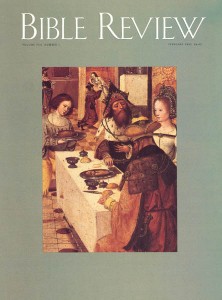Verbs in Hebrew—as in other languages—can assume many forms, depending on the tense, person, number and gender of the person or thing that is doing the action.
The simplest form of a Hebrew verb consists of three consonants and two vowels to express the past tense. Here are a dozen frequently used verbs:
(a-chal) | eat | |
(la-mad) | learn | |
(ka-tav) | write | |
(a-mar) | say | |
(ya-lad) | give birth | |
(ya-shav) | sit | |
(ga-mar) | finish, complete | |
(na-tan) | give | |
(sha-mar) | guard, keep | |
(ha-lach) | walk, go | |
(sa-gar) | shut, close | |
(a-mad) | stand |
Join the BAS Library!
Already a library member? Log in here.
Institution user? Log in with your IP address.

